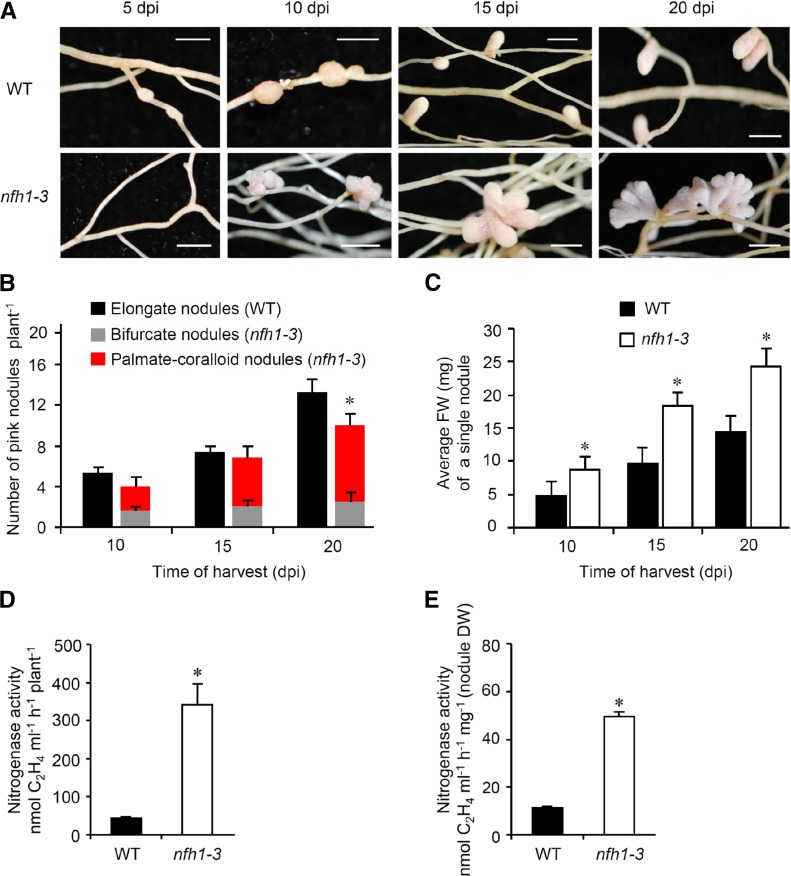Figure 7.
Time-Course Analysis of Nodule Formation and Nitrogenase Activity in Nodules.
M. truncatula R108 wild-type and nfh1-3 mutant plants were inoculated with S. meliloti Rm41 and harvested at indicated time points.
(A) Photographs of roots and nodules at the time of harvest. Bars = 2 mm.
(B) Quantification of different types of nodules. Wild-type plants formed elongate nodules while the nfh1-3 mutant formed either bifurcate or palmate-coralloid nodules. Data indicate means (±se) based on analysis of 10 plants of each genotype and for each time point. Compared with the wild type, a significantly reduced nodule number (marked by an asterisk) was observed for the nfh1-3 mutant at 20 dpi (Kruskal-Wallis test, P ≤ 0.05; Supplemental File 1).
(C) Quantification of the fresh weight of an individual nodule formed by wild-type and nfh1-3 roots. Data indicate means (±se) based from 10 plants of each genotype and for each time point. Asterisks indicate significantly increased values for the nfh1-3 mutant as compared with the wild-type (Kruskal-Wallis test, P ≤ 0.05; Supplemental File 1).
(D) and (E) Nitrogenase activity per plant (D) and per nodule biomass (dry weight) (E) at 20 dpi. Asterisks indicate significantly increased activities in nfh1-3 nodules as compared with wild-type nodules at this time point (Kruskal-Wallis test, P ≤ 0.05; Supplemental File 1).

